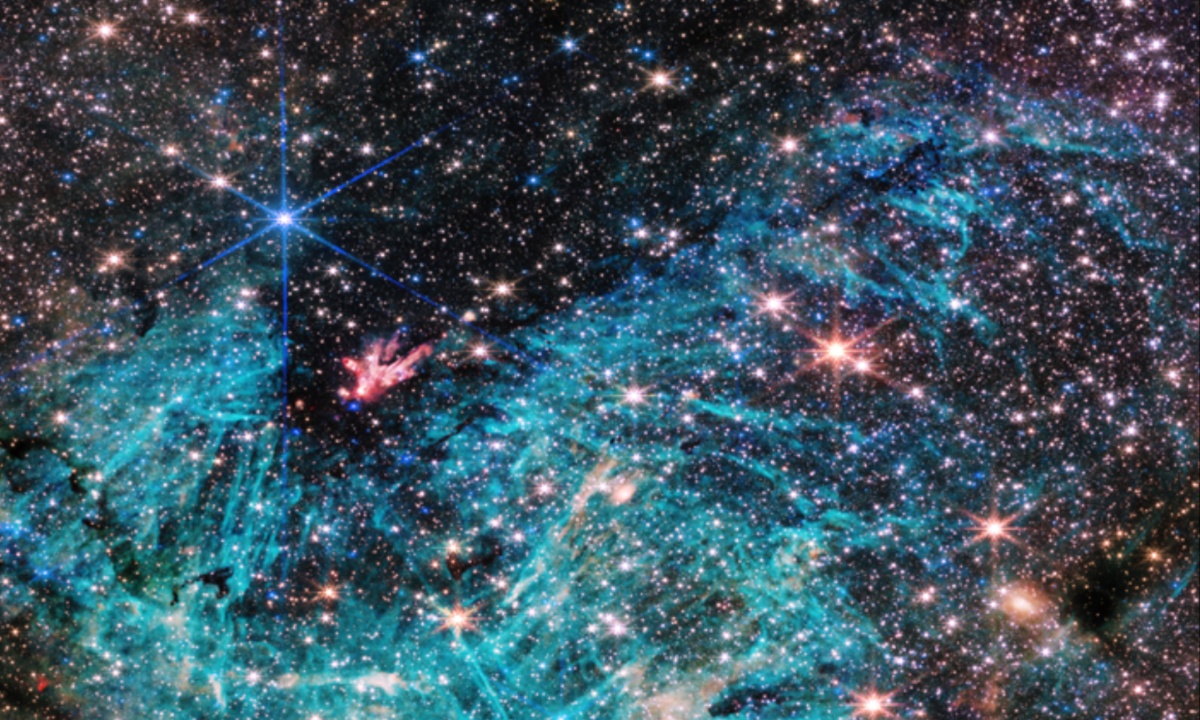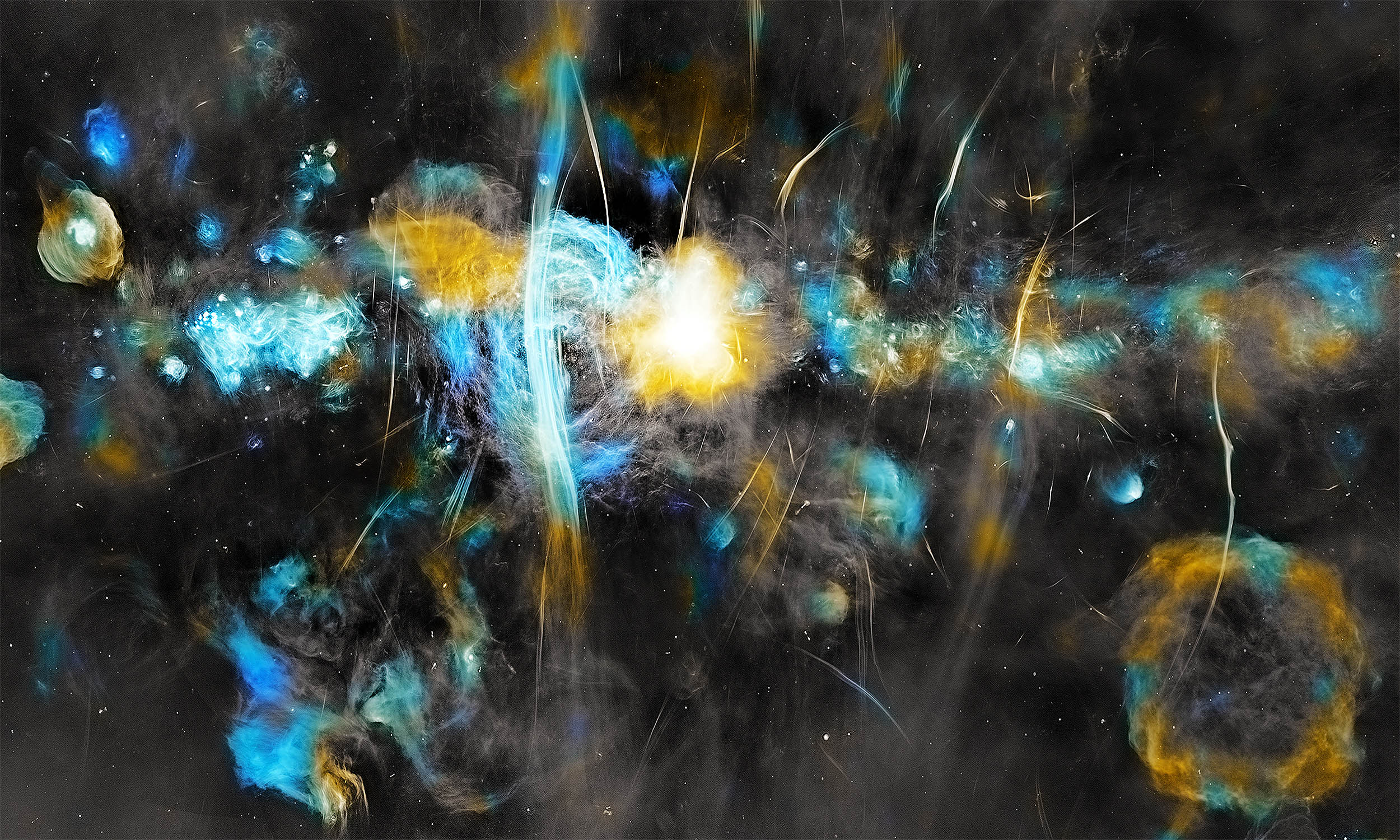Located about 200 light-years from the black hole at the center of the Milky Way, Sagittarius C is a star-forming cloud composed of gas and dust. While this region contains all the necessary material to create new stars, the rate of star formation is surprisingly low.
Despite the fact that Sagittarius C has likely produced thousands of stars, scientists were puzzled by its relatively low star birth rate. To investigate this anomaly, researchers used the James Webb Space Telescope, a collaboration between NASA, the European Space Agency, and the Canadian Space Agency, to gain clearer insights into the region.
James Webb Telescope Uncovers Magnetic Fields’ Role in Limiting Star Formation in Sagittarius C
Through its powerful infrared capabilities, the James Webb Space Telescope provided unprecedented data that allowed scientists to analyze the region more effectively. The findings, published in The Astrophysical Journal, reveal that magnetic fields may play a significant role in limiting the number of stars born in Sagittarius C.
As John Bally, an astrophysicist at the University of Colorado Boulder, pointed out, despite the abundance of gas and dust, few stars are born, possibly due to the interference of strong magnetic fields that disrupt the star formation process.

Webb’s infrared imaging allowed it to penetrate the cosmic dust and gas that typically obscure light from distant objects, offering a clear view of the star-forming processes. This breakthrough is compared to detecting the heat of a bumblebee on the moon in terms of sensitivity.
The images captured not only revealed two massive stars over 20 times the mass of the sun but also uncovered five smaller stars enshrouded in thick dust. Additionally, Webb’s observations highlighted 88 glowing hydrogen structures believed to be shock waves produced by young stars ejecting material into space.
Meerkat Telescope and Webb’s Data Reveal New Insights into Star Formation Dynamics
To further understand the environment of Sagittarius C, the Meerkat radio telescope in South Africa provided context by capturing an image of the entire star-forming region within a 1,000 light-year span. This additional data complemented Webb’s detailed infrared images, which cover a more focused area of about 44 light-years. Together, these tools have provided a broader view of the region’s dynamics, revealing the complexities of star formation and offering new avenues for exploration.
The findings from these studies have significant implications for the broader understanding of star formation. Magnetic fields, once thought to play a minor role, now seem to have a major influence in restricting star formation within dense gas clouds.
This discovery not only sheds light on the unique conditions of Sagittarius C but also raises new questions about how magnetic fields affect star birth both within our galaxy and beyond. As Samuel Crowe, a Rhodes Scholar at the University of Virginia, noted, this discovery could revolutionize the way scientists approach the study of star formation in other regions of the universe.

